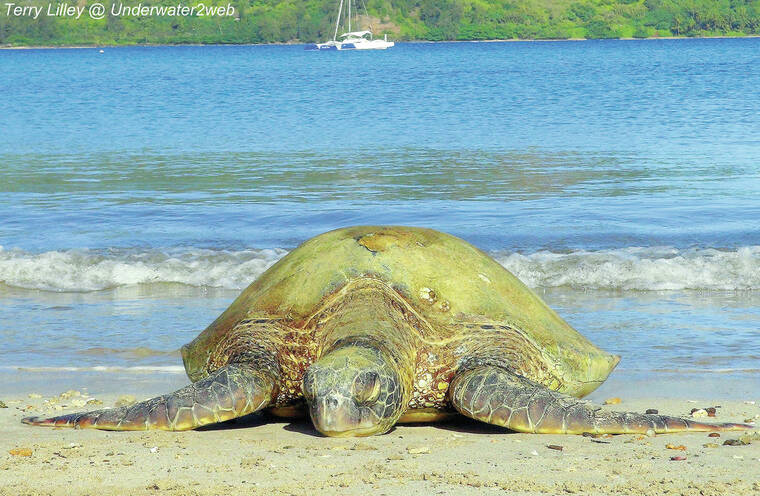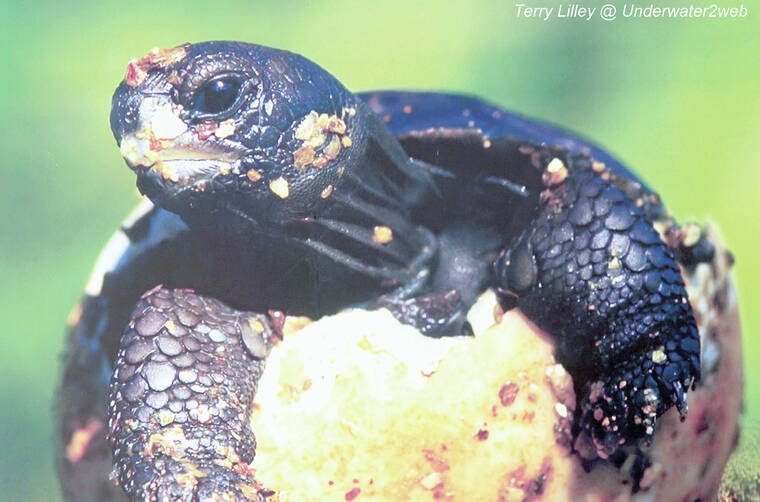A Category 5 hurricane hit the western end of the northwest Hawaiian Islands a few years back and the sea reclaimed several small coral atolls.
This does not sound like a big deal to us humans, as these islands did not have any permanent human population and the islands are more than 1,000 miles away from the main Hawaiian Islands.
The sinking of these coral atolls was a very big event for our sea turtles (honu) because a large percent of our entire honu population ventured all the way to these atolls to lay their eggs. Most sea turtle species, worldwide, go back to the very beach they were hatched on to lay their eggs when they are sexually mature.
Honu have the ability to use the earth’s magnetism to navigate thousands of miles of ocean to find their nesting site, but many of the honu knew their remote coral atolls had been destroyed. This has caused more of the sea turtle population to try and find a new nesting site on the main Hawaiian Islands.
For a sea turtle to find a good place to lay their eggs, they need to have a large wide beach. But many of our large white beaches are gone here in Hawai‘i due to coastal development and basic sea level rise.
This creates a huge problem for the nesting female honu, as they dig holes on the beach and lay their eggs in the sand that has the perfect temperature and humidity for the eggs to grow and hatch. The female sea turtles can determine the sex of their babies by laying their eggs at different temperatures.
If they lay their eggs farther up the beach in the warm, shallow sand, the eggs will hatch out as females. If they lay their eggs closer to the surf in moist, cooler sand, the babies will hatch out as males. So the female honu can decide if the general population needs more males or females.
We first discovered some reptiles’ ability to determine the sex of their offspring by choosing incubation temperatures. We discovered this amazing ability first in leopard geckos, and then certain aquatic turtles, Galapagos tortoises, and eventually the sea turtles that were hatched in captivity.
The problem the turtle population now faces is our beaches have shrunk and homes block the beach from receding. This does not give the female turtles enough room to determine the outcome of the sex of their babies. Plus the turtles lay their eggs now on beaches that are so narrow that the eggs wash away in the big surf or get trampled by the tourists.
Without the atolls in the northwest Hawaiian Islands, our honu are in danger of extinction due to the lack of good beaches to lay their eggs. We may have to set aside egg laying beaches for the honu to use because if a green sea turtle female is trying to lay her eggs and she can’t find a good beach, she can die from being egg bound.
As our sea levels rise we must make room for marine life that will need to use the beach for the very survival of their species.
•••
Terry Lilley is a marine biologist living in Hanalei Kaua‘i and co-founder of Reef Guardians Hawai‘i, a nonprofit on a mission to provide education and resources to protect the coral reef. To donate to Reef Guardians Hawaii go to www.reefguardianshawaii.org.



